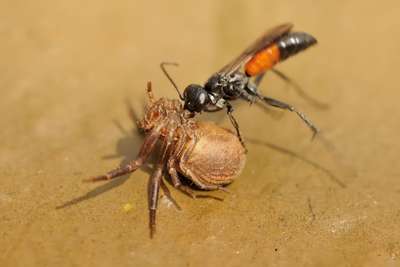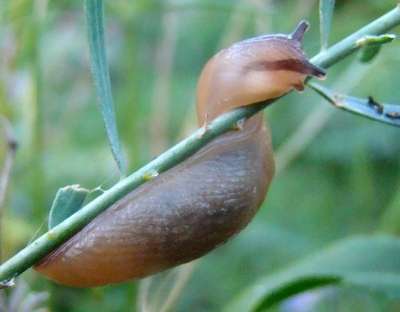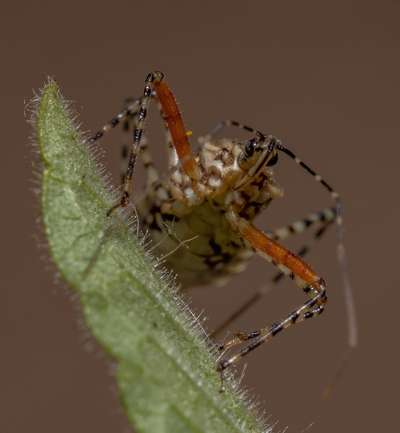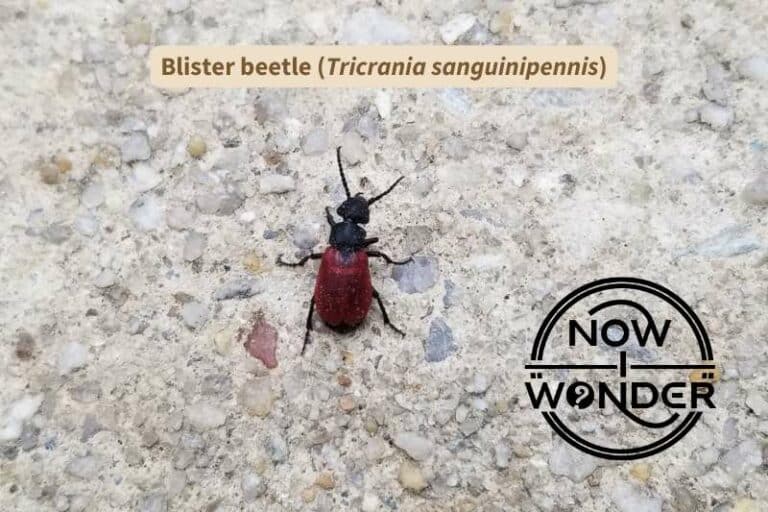Skinks are reptiles classified within family Scincidae. Skinks are long, cylindrical, scaled animals with long tails and either four or no legs, depending on the species. Active during the day, most are insectivorous. All skinks lay eggs; some females tend the eggs until hatching.
Skinks can live in trees, on the ground, or in the ground. Species that burrow into the ground generally have either reduced or absent legs. Skinks that live on the ground or in trees have four legs with five-toed, clawed feet.
As lizards, skinks have ears which are made up of middle ears, vibrating tympanic membranes and ear canals. They also have movable eyelids that can close over their eyeballs; the lower half of the eyelid is transparent in burrowing species to allow them to see while underground.
The upper and lower jaws of skinks are attached to each other at the hinge, which restricts the gape of their jaws. Their mouths are much less mobile than those of their fellow reptiles the snakes, which limits the size of the prey they can consume.
Worldwide, there are more than 1200 skink species classified within 87 genera; 15 of these species inhabit the United States (Behler and King 2020). One species commonly seen in the southeastern United States is the five-lined skink (Plestiodon fasciatus). Read on to learn about the lifestyle and abilities of this remarkable lizard.

What does a five-lined skink look like?
Five-lined skinks are cylindrical, smooth-scaled animals with four legs and long tails. Juveniles are black with five pale stripes and bright blue tails. Adult males are brown with faded to absent stripes; females retain their stripes. The tails of both sexes turn brown with maturity.
Five-lined skinks (Plestiodon fasciatus) are about 5–8 inches long (12.7–20.5 cm) and have four legs that project horizontally from the sides of their bodies in typical reptile fashion. Their feet have five toes tipped with claws for traction; the fourth toe is the longest. Their scales are smooth, overlap, and are so shiny that the animals often appear wet. This shininess can trick people into believing that they are salamanders. At all ages, the tail is long, thin, and represents almost half of the animal’s total length.
Five-lined skinks are sexually dimorphic, meaning males look different from females. Juveniles look different from both adult sexes. When young, both males and females are jet black with five light-colored stripes running from the tips of their noses down the length of their bodies, ending at approximately the middle of the tail.
One stripe starts out split on either side of the nose, converges into a single line behind the animal’s head and runs down the center back. The next pair of stripes runs lengthwise down the side of the body and the final pair runs lengthwise along the bottom edge of the body. The stripes are usually yellow to white and fade into the solid, electric blue color of the tail. The blue tail color begins a centimeter or two behind the hind legs and extends to the tail tip.
Adult males turn a uniform brown as they mature. In addition to losing all or most of their youthful striping, their heads turn orange during mating season, probably due to hormonal changes. This color change is one aspect of species signaling that helps males and females identify each other. The tails of male Five-lined skinks tend to be slightly thicker at the base than those of females due to the presence of their paired sex organs, called “hemipenes”.
Adult females are smaller than males but larger than juveniles and they retain their stripes into adulthood. Females vary in size, with larger females being more attractive to males as mates because they produce more eggs.
All ages have dark eyes. Their long bodies are sometimes curved into a “S” shape. Their heads are widest at the jaw hinge, although five-lined skinks are very streamlined overall.
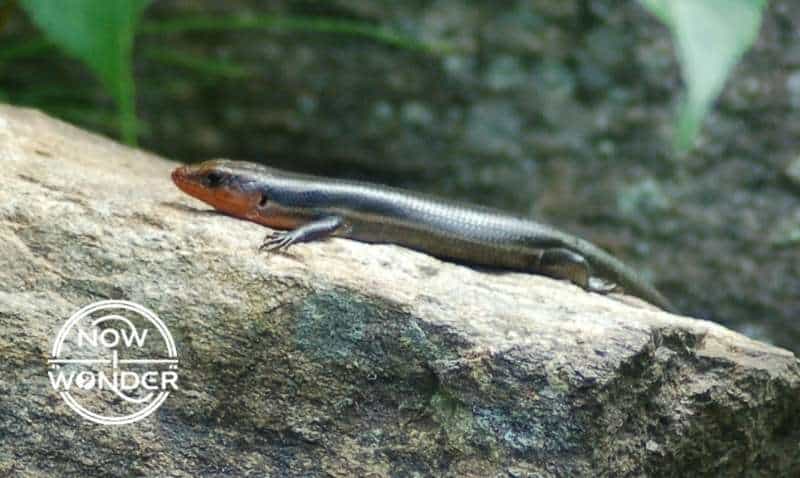
What other lizards look like five-lined skinks?
Coal skinks (Plestiodon anthracinus), southeastern skinks (Plestiodon inexpectatus) and broad-head skinks (Plestiodon laticeps) look similar to five-lined skinks (Plestiodon fasciatus) and are differentiated by the number and size of scales present on the upper jaws and beneath the tails.
However, most amateur naturalists aren’t going to get close enough to make these comparisons when encountering these animals in the wild.
Can skinks re-grow their tails?
Like many lizards, skinks evolved “caudal autotomy” or the ability to break their tails off as a survival strategy to avoid predation. Muscles in the severed tail continue to contract after separation, which can distract a predator and allow the skink to escape.
In addition to running away and biting when forced to do so, skinks evolved a strategy called “caudal autotomy”, also known as “tail autotomy”, which involves three components.
First, their tail vertebrae contain anatomical breakage points that let the tail break away easily from the skink’s body when grasped by a predator (Barr 2021).
Second, special valves in the blood vessels of the tail close tightly at the point of breakage, which keeps the skink from bleeding to death (Barr 2021) as would happen to any other animal who severed a body part without benefit of this adaptation.
Third, the tail muscles spasm reflexively after separation to distract an attacker while the skink itself escapes (Aspinall 2020). A skink makes a short term sacrifice to win the chance for long term survival.
A skink’s investment in caudal autotomy as a survival strategy is inherent in the species. Skinks evolved tails that make up so much of their total body length so that they could leverage multiple fracture points all along the tail vertebrae and hopefully survive multiple different attacks.
Juvenile skinks evolved such bright, electric blue tails to draw attackers’ attention to the least vulnerable – and least vital – part of their bodies. All skinks have these anatomical fracture points in their tails, although juveniles rely on caudal autotomy the most because they are smaller and more vulnerable to predators than adults.
Caudal autotomy is an amazing survival strategy in the short term but does have some drawbacks in the long term.
Skinks can re-grow their tails but the replacements are never as strong as the originals because they are supported by cartilage rather than bony vertebrae.
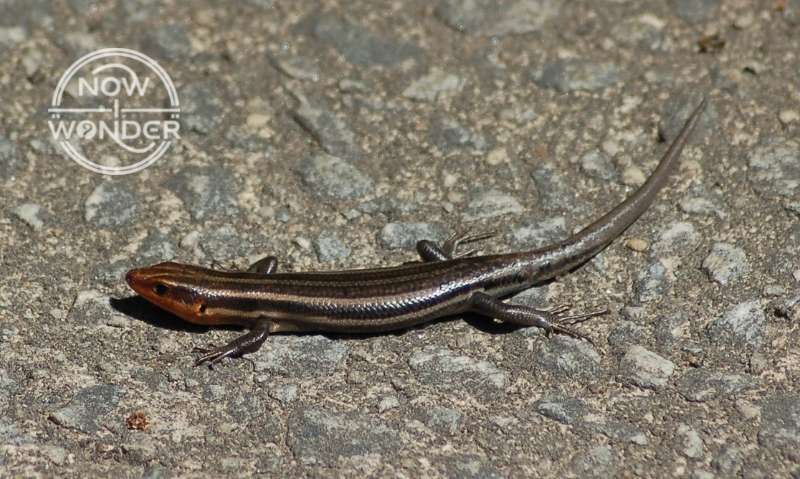
The process also requires a lot of energy. Energy directed towards tail replacement becomes unavailable for general growth and reproduction. Skinks who have lost their tails tend to be smaller and less likely to win mates because they lose valuable storehouses of body fat when they sacrifice their tails to survive.
Tailless skinks are also at higher risk of being caught by subsequent predators for two reasons.
First, their tails make up so much of their total body length that they are much smaller without them. Skinks increase their body temperatures by basking so tailless skinks have less surface area available to absorb heat from the sun. Therefore, they must bask out in the open for longer periods before their bodies warm to optimal temperatures.
Second, they run slower because they lose the mechanical advantage provided by their original tails for sprinting speed. To learn more about just how fast five-lined skinks are and how their long tails help, check out our post “Everyday lives of Five-lined Skinks”.
Re-growing tails take a long time. The speed with which the process occurs depends on many factors, such as how much of the tail was lost. Skinks may regenerate their tails faster when the break is close to the body than closer to the tip (i.e. more of the tail is lost) (Barr 2021). Temperature, age, and day length can also impact speed of re-growth (Barr 2021).
Related Now I Wonder Posts
To learn more about lizards, check out these other Now I Wonder posts:
- Everyday lives of Five-lined Skinks
- What are the small green lizards called?
- Everyday lives of green anoles
For more information about snails and slugs that some lizards prey upon, check out these other Now I Wonder posts:
- What are slugs?
- What do slugs eat?
- What is the large spotted slug called?
- What is the difference between slugs and snails?
References
Aspinall V, Cappello M. 2020. Lizards. In: Introduction to animal and veterinary anatomy and physiology. 4th ed. CABI.
Barr J, Boisvert C, Bateman P. 2021. At what cost? Trade-offs and influences on energetic investment in tail regeneration in lizards following autotomy. Journal of Developmental Biology 9 (4): 53. [Internet]. [cited 2022 June 16]. Available from: https://www.mdpi.com/2221-3759/9/4/53/htm
Behler J, King F. 2020. National Audubon Society field guide to reptiles and amphibians. 32nd ed. New York (NY): Alfred A. Knopf.

